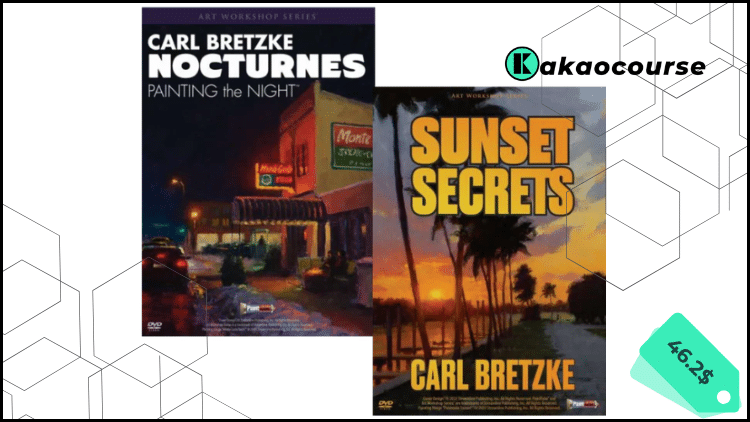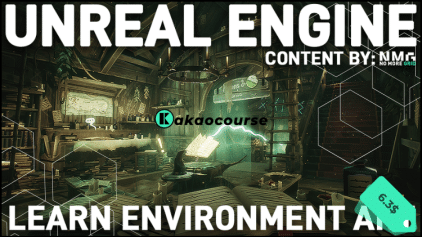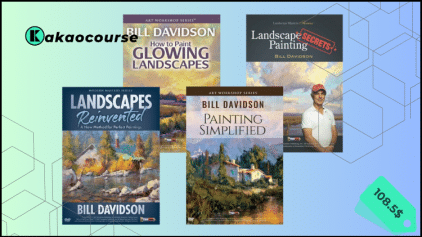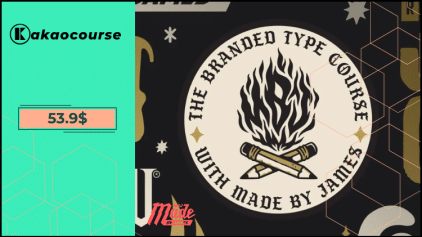Free Download Carl Bretzke Bundle – Here’s The Content Available For You:
Carl Bretzke Bundle, Check Out the Full Course Contents:
Carl Bretzke Bundle, Watch Our Free Video Sample to Find Out More:
Overview this course
The Carl Bretzke Bundle brings together two complete learning experiences—Sunset Secrets and NOCTURNES: Painting the Night—in one streamlined package totaling 18 hours and 15 minutes of training. If you’ve ever struggled to translate fleeting light into confident brushwork or to make nocturne scenes glow without turning muddy, this bundle gives you a practical, repeatable system from a master of plein air and urban light.
Rather than abstract theory, Carl teaches clear workflows you can deploy on your very next session. You’ll learn how to prepare efficiently, what to pack, how to choose subjects that will succeed, and how to sequence your decisions so your painting develops with structure and momentum. The lessons move from on-location strategy (gear, setup, pacing) to studio refinement (edges, atmosphere, and subtle color transitions) so you can work fluidly wherever you paint.
Both courses are grounded in professional discipline: limited, logical palettes; decisive value organization; and time-boxed steps that protect you from overworking. The result is a robust skill set for painting sunsets, night streets, snowy evenings, and quiet, lamp-lit landscapes with believable light, clean color, and expressive mood.
Why should you choose this course?
-
A master’s process, demystified. Carl’s stepwise approach breaks complex lighting problems into manageable passes, helping you paint faster and see more clearly in fast-changing conditions.
-
Field-to-studio confidence. You’ll understand the difference between what must be captured on site (gesture, big color notes, value structure) and what’s best refined later (edges, accents, compositional edits).
-
Clean, luminous color. Learn methods for avoiding “mud,” preserving chroma at sunset, and making artificial lights glow without garish halos.
-
Time-tested efficiency. A limited 16-color palette, specific brush choices, and compact gear recommendations keep focus on painting, not rummaging.
-
Systems you can reuse. The Sunset Sequence and the Six-Step Nocturne System give you repeatable checklists that reduce guesswork and calm the chaos of fleeting light.
-
Versatility across media. While demonstrated in oils, the principles of value mapping, color relationships, and atmospheric transitions transfer well to acrylics and gouache.
-
Plein air realities addressed. From easel lighting and flashlights to site selection and safety, the bundle anticipates the challenges of outdoor work so you can stay present and productive.
What You’ll Learn
Sunset Secrets: mastering the last light
-
Smart prep for a moving target. Build a pre-sunset checklist: location, vantage, horizon line, ground plane reads, and a backup plan for changing weather.
-
Palette discipline that pays off. Work confidently with a 16-color palette that covers warm/cool primaries, earths, and key modifiers—enough range to capture high-chroma skies and quiet, atmospheric grounds.
-
Essential pigments for sunset. Identify the one hue family that anchors believable sunsets and learn how to neutralize it gracefully as the light shifts.
-
Brush strategy for soft transitions. Choose the brush type that best handles sky gradations and cloud edges without smearing values.
-
The “30-minute sprint.” Follow seven decisive steps to lock in composition, horizon, value structure, and key color notes before the sun drops.
-
Seeing like a designer. Prioritize the ground plane (roads, water, fields) to carry reflections and counterbalance the sky—critical for believability.
-
Drawing that accelerates you. Use quick, proportional block-ins and one key structural pass to speed decisions without boxing yourself in.
-
Sky and cloud gradations. Build top-to-bottom and warm-to-cool transitions that look airy (not mechanical), with edges that respond to moisture and altitude.
-
Easel lighting and visibility. Set up an easel light and carry a flashlight so color judgment stays accurate as dusk deepens.
-
Studio-side refinements. Understand why every strong plein air sunset has a “studio side”—subtle value compressions, edge hierarchy, and accent placement that are best resolved indoors.
-
Artificial lights at dusk. Introduce streetlamps, car lights, and window glow that integrate with ambient color temperature, not fight it.
-
Haze is your friend. Use muted skies and atmospheric scattering to create depth and sophistication—your painting doesn’t need a neon sunset to feel magical.
-
Color micro-shifts. Train your eye for the nuanced hue and temperature changes that happen minute by minute.
-
Carl’s “Sunset Sequence.” A repeatable order of operations—from big shapes to final glints—that helps you capture the magic consistently.
NOCTURNES: Painting the Night
-
The Six-Step Nocturne System. A clear path from subject selection to final accents that keeps you oriented in low light.
-
Value mapping after dark. Build a stable value “scaffold” so your lights and mid-tones read, even when you can’t rely on daylight perception.
-
Clean chroma in illuminated areas. Apply paint in lit zones to avoid mud, reserving your highest chroma for the right spots at the right time.
-
Learning to “see” in the dark. Train perception under low light so you make sound color calls without over-brightening the scene.
-
Color shifting & prismatic thinking. Use temperature shifts (not white) to convey glow and to keep shadow colors alive.
-
Tools for glow. Select the best tools (from bulbs to diffusers) that help create convincing halation and edge softness.
-
Light source strategy. Position yourself relative to streetlamps, signage, and headlights for compelling compositions and readable value shapes.
-
Whiteless white. Paint whites that feel luminous but aren’t chalky by keying value and temperature to context.
-
Local color logic. Adjust a subject’s local color when it sits in light versus shadow, maintaining coherence across the scene.
-
Atmospheric blends. Mix air, not just objects: blend color through humidity, snow, or haze to carry depth.
-
Reflections that behave. Render reflections on wet pavement, water, and snow with believable perspective, value drop, and edge control.
-
Night snow. Tackle lit and shadowed snow without losing the sense of chill, grain, or sparkle.
-
Picking winners quickly. A simple rubric for finding nocturne subjects with strong value patterns and minimal clutter—so you finish more paintings you love.
Workflow, gear & mindset that raise your finish rate
-
Focus and flow. Use short, mental cue cards to enter flow faster and prevent decision fatigue as the light changes.
-
Lighting logistics. The right light for your easel protects color accuracy; a flashlight is indispensable for palette and safety.
-
Process timeboxing. Keep yourself on track with timed passes: block in, big color notes, refinement, and accent.
-
Final pass priorities. Make last adjustments with viewer read in mind: what you want noticed first, second, and third.
-
From field study to studio painting. Harvest the best parts of a plein air study and expand it in the studio without losing the initial spark.
Who Should Take This Course?
-
Plein air painters who want reliable systems for rapidly changing sunsets and night scenes.
-
Urban & landscape artists aiming to capture streetlights, car trails, windows, and reflective pavements with credibility.
-
Oil and acrylic painters who struggle with muddy mixtures or overworked skies and want cleaner, more luminous color.
-
Intermediate artists ready to turn decent starts into consistent finishes by tightening process and sequencing.
-
Advanced painters & instructors looking for articulate, teachable frameworks (Sunset Sequence, Six-Step Nocturne) to pass on to students.
-
Studio painters who want to build a library of on-site studies and confidently translate them into larger, exhibition-ready works.
-
Photographers crossing into paint who understand light but need brush, edge, and paint-handling skills to match their eye.
If capturing light is your obsession—whether it’s the last flare of the day or the quiet theater of a rain-glossed street at midnight—this bundle meets you where you are and elevates your craft.
Conclusion
Painting light is a race against time and a study in restraint. The Carl Bretzke Bundle equips you with structured checklists, efficient tools, and professional habits to win that race and keep your color fresh. You’ll learn to plan well, work fast without hurrying, and make thoughtful studio refinements that heighten mood and clarity. Most importantly, you’ll install reusable workflows—the Sunset Sequence and the Six-Step Nocturne System—so every session begins with confidence and ends with a painting that reads.
Set yourself up for more finished work, fewer false starts, and a portfolio that glows with believable atmosphere—at dusk, after dark, and everywhere in between.
Ready to paint light with intention and finish more keepers? Grab the Carl Bretzke Bundle now and start your next session with a master’s roadmap in your pocket.











Reviews
There are no reviews yet.